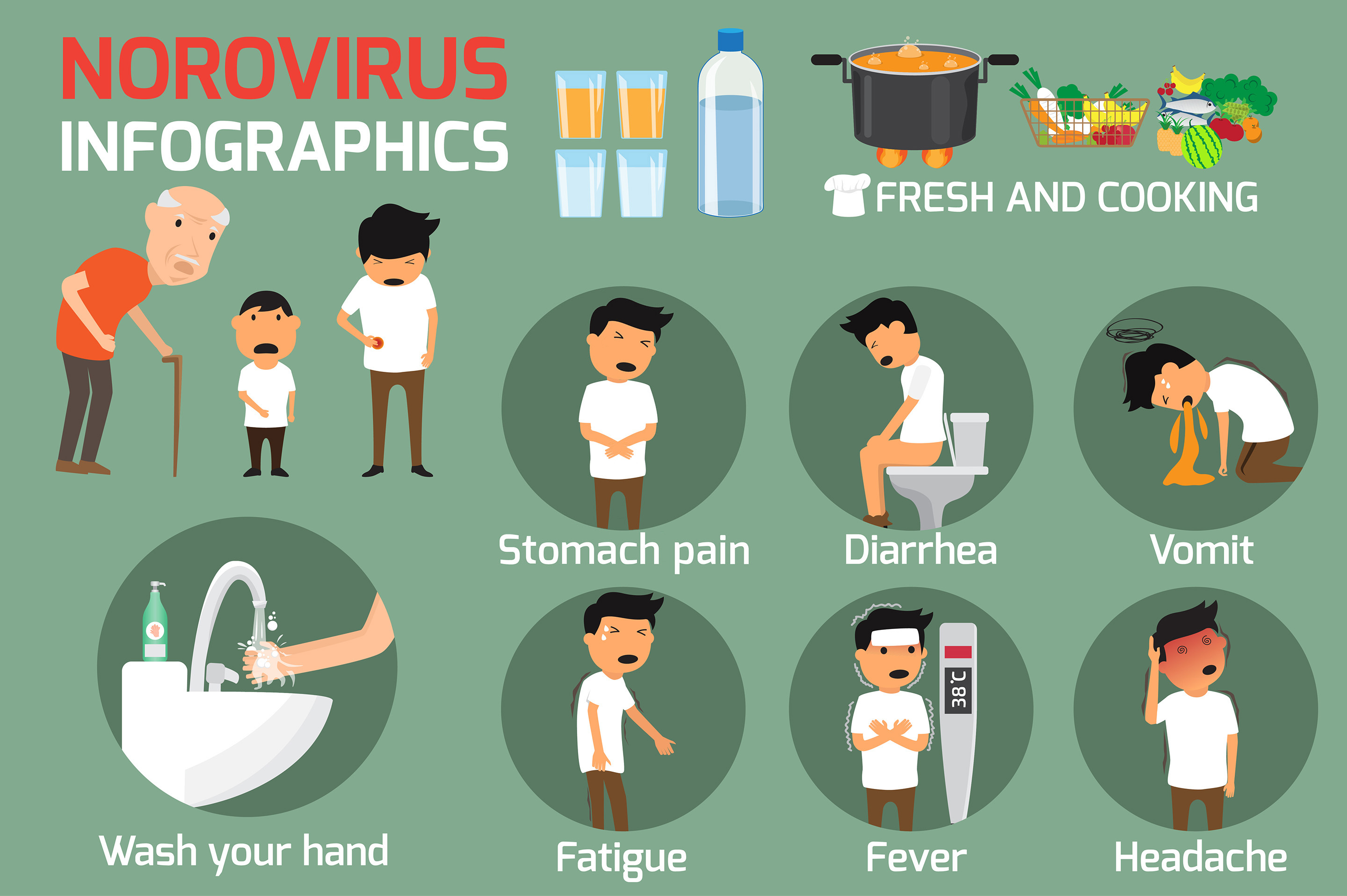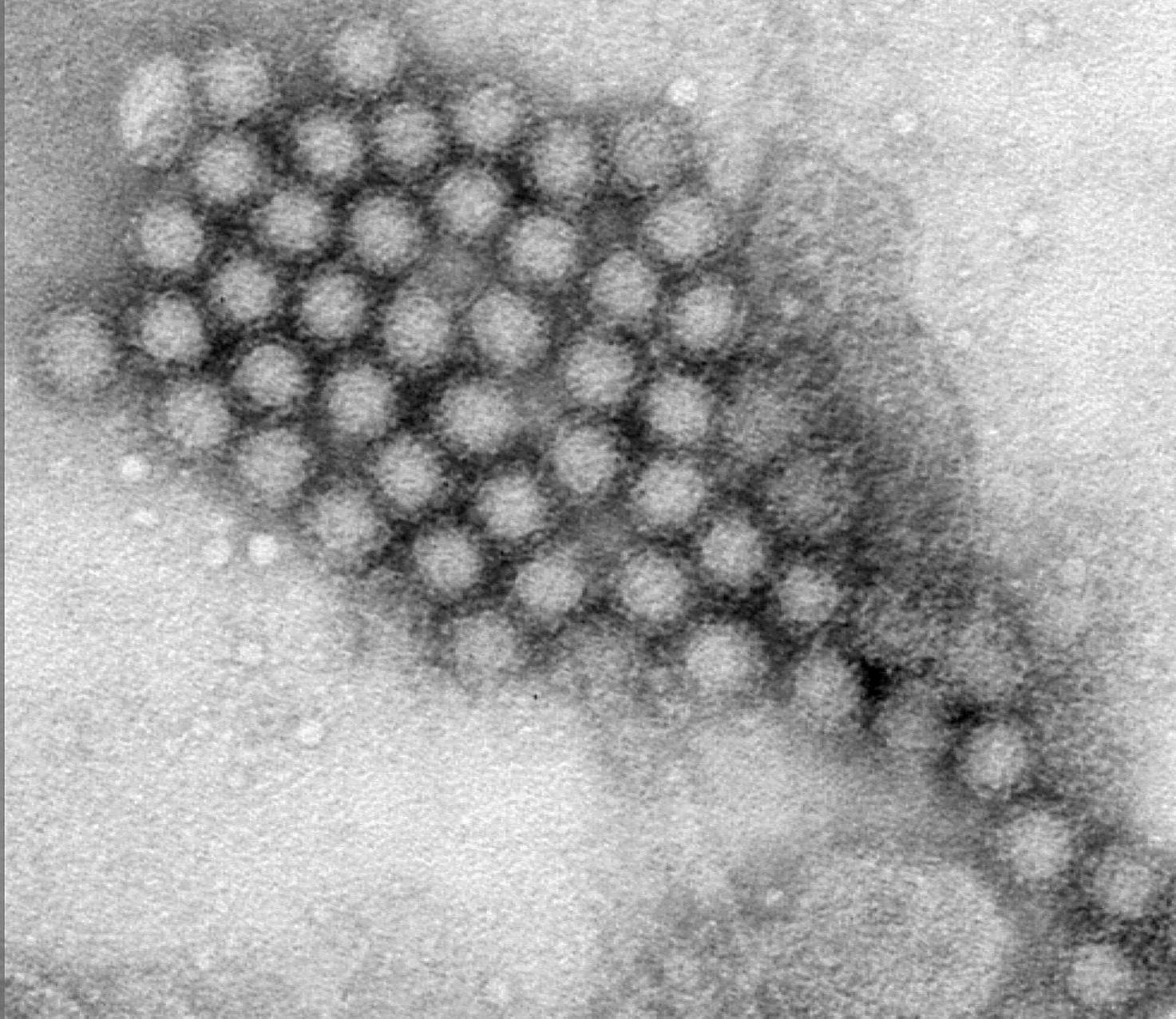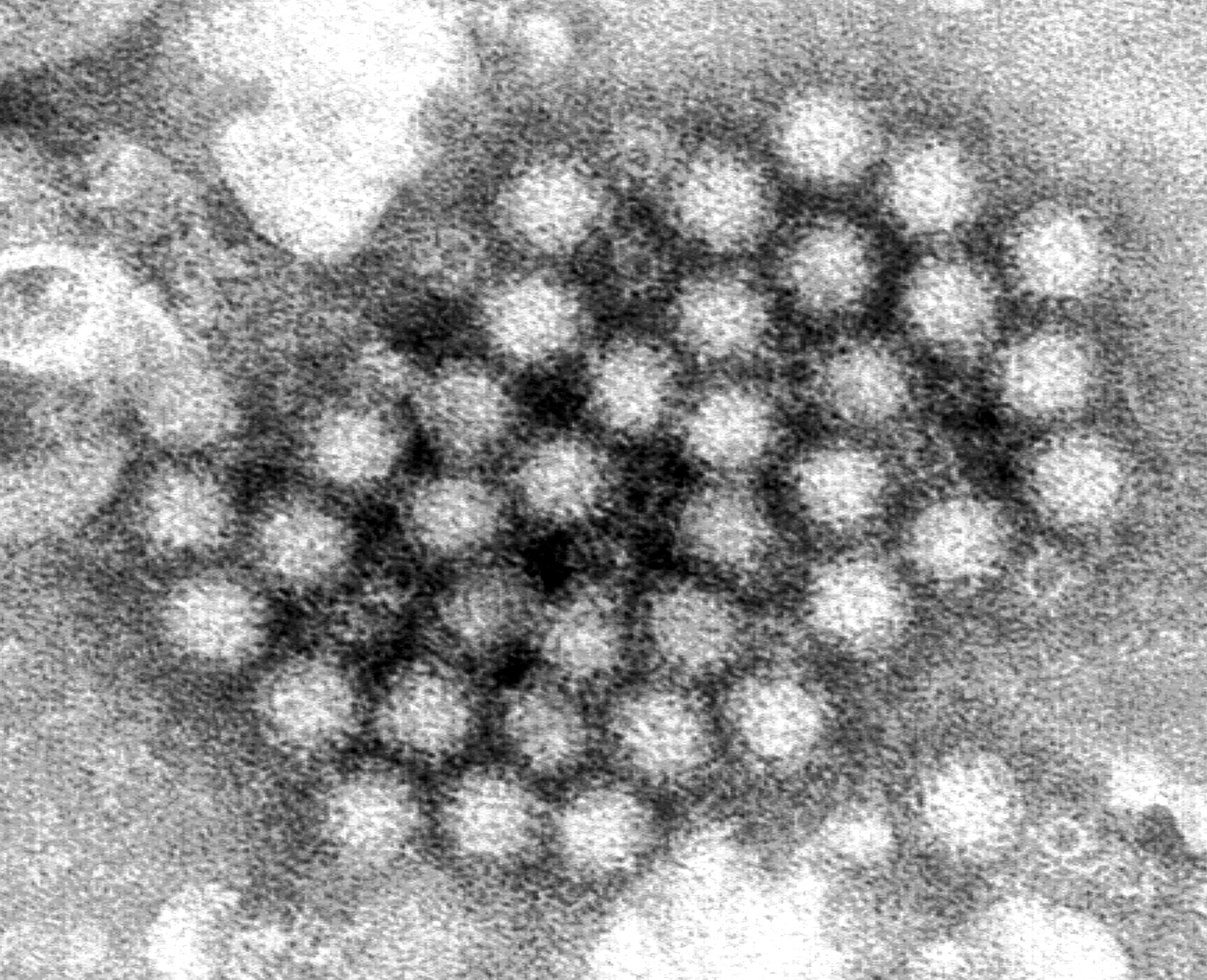Viral News | Explore around Viral and popular News this year
Norovirus Infection: Symptoms, Transmission, And Prevention
Are you still unaware of the "Norovirus Infection: Symptoms, Transmission, And Prevention"? If yes, then deep dive into this article to get more knowledge about this common infection.
Editor's Notes: "Norovirus Infection: Symptoms, Transmission, And Prevention" have published on today date . It is one of the most important topics to read about, as it is a very common infection that can cause severe symptoms.
In order to help target audience make the right decision, we have put together this Norovirus Infection: Symptoms, Transmission, And Prevention guide after doing various analysis, digging information, and doing research.
| Symptoms | Transmission | Prevention |
|---|---|---|
| Nausea | Contact with an infected person or contaminated food or water | Washing hands frequently, avoiding contact with infected people, and disinfecting surfaces |
| Vomiting | Ingesting contaminated food or water | Cooking food thoroughly, avoiding raw shellfish, and drinking clean water |
| Diarrhea | Touching contaminated surfaces or objects | Keeping surfaces clean, using gloves when handling potentially contaminated items, and avoiding touching the face |
| Abdominal pain | Airborne transmission through respiratory droplets | Covering the mouth and nose when coughing or sneezing, and staying home when sick |
| Headache | - | - |
| Fatigue | - | - |
These are just the most common symptoms of norovirus infection, but be aware that many more are out there. If you are experiencing any of these symptoms, it is important to see a doctor right away.
FAQ
This comprehensive FAQ section provides answers to common questions and concerns regarding Norovirus infection, its symptoms, transmission, and effective preventive measures.

stomach virus symptoms 2021 - Source creamcheesecakes.blogspot.com
Question 1: What are the typical symptoms of Norovirus infection?
Norovirus infection commonly manifests with gastrointestinal distress, causing severe vomiting and diarrhea. Additional symptoms may include nausea, abdominal cramps, and low-grade fever. Weakness, fatigue, and headache are also frequently reported.
Question 2: How is Norovirus transmitted?
Norovirus primarily spreads through contaminated food or water. Ingesting contaminated shellfish, such as oysters or clams, is a common source of infection. Person-to-person contact with an infected individual, touching contaminated surfaces, or inhaling airborne viral particles can also lead to transmission.
Question 3: What is the incubation period for Norovirus infection?
The incubation period for Norovirus infection typically ranges from 12 to 48 hours. Symptoms usually commence within 1 to 2 days after exposure to the virus.
Question 4: How long can an individual remain contagious after being infected with Norovirus?
Individuals infected with Norovirus can shed the virus in their stool and vomit for up to 2 weeks. During this period, they remain contagious and can spread the infection to others.
Question 5: What are the best ways to prevent Norovirus infection?
Effective preventive measures include thoroughly washing hands with soap and water, avoiding consumption of contaminated food or water, disinfecting frequently touched surfaces, and staying home if experiencing symptoms of infection.
Question 6: Is there a cure for Norovirus infection?
Currently, there is no specific cure for Norovirus infection. Treatment focuses on managing symptoms and preventing dehydration. Adequate hydration through oral rehydration solutions or intravenous fluids is crucial.
By understanding the symptoms, transmission routes, and preventive measures associated with Norovirus infection, individuals can effectively safeguard their health and minimize the risk of infection.
Transition:
Tips on Norovirus Infection Prevention
Norovirus is a highly contagious virus that causes inflammation of the stomach and intestines. It can be transmitted through contaminated food, water, or surfaces, and can cause symptoms such as nausea, vomiting, diarrhea, and abdominal pain. To prevent norovirus infection, it is important to follow good hygiene practices and take precautions when handling food and water. Here are some tips to help prevent norovirus infection:
Tip 1: Wash your hands frequently with soap and water
Washing your hands is the most important way to prevent the spread of norovirus. Wash your hands before eating, after using the bathroom, and after changing a diaper. Use soap and water and scrub your hands for at least 20 seconds. If soap and water are not available, use an alcohol-based hand sanitizer with at least 60% alcohol.
Tip 2: Clean and disinfect surfaces that may be contaminated
Norovirus can survive on surfaces for several days. Clean and disinfect frequently touched surfaces, such as doorknobs, countertops, and bathroom fixtures, with a bleach-based cleaner. Follow the manufacturer's instructions for proper use and dilution.
Tip 3: Handle food safely
Cook seafood thoroughly to an internal temperature of 145°F (63°C). Wash fruits and vegetables thoroughly before eating them. Avoid eating raw shellfish, as they can be contaminated with norovirus.
Tip 4: Drink clean water
Drink only boiled or treated water, especially when traveling to areas with poor sanitation. Avoid drinking water from wells or other untreated sources.
Tip 5: Stay home if you are sick
If you are experiencing symptoms of norovirus, stay home from work or school to avoid spreading the virus to others. Contact your doctor for advice and treatment.
By following these tips, you can help prevent the spread of norovirus infection and protect yourself and others from this unpleasant illness. For more information, refer to the article Norovirus Infection: Symptoms, Transmission, And Prevention.
Norovirus Infection: Symptoms, Transmission, And Prevention
Norovirus infection, commonly referred to as the "stomach flu," is a highly contagious viral infection that affects the gastrointestinal tract. Understanding its symptoms, transmission routes, and preventive measures is crucial to minimize the impact of this infection.

Free picture: transmission, electron micrograph, ultrastructural - Source pixnio.com
- Symptoms: Nausea, vomiting, diarrhea
- Transmission: Contact with infected persons or contaminated surfaces, food, or water
- Prevention: Hand hygiene, food safety, and surface disinfection
- Incubation: 12-48 hours
- Duration: 1-3 days
- Complications: Dehydration, electrolyte imbalance
Norovirus is highly transmissible due to its low infectious dose and stability in the environment. Proper hand hygiene remains the cornerstone of prevention, along with thorough cleaning and disinfection of contaminated surfaces. Maintaining food safety standards, including proper cooking and storage of food, is also vital to prevent infection. Vaccination is not yet available for norovirus, emphasizing the importance of preventive measures.

Free picture: symptoms, norovirus, illness, include, nausea, vomiting - Source pixnio.com
Norovirus Infection: Symptoms, Transmission, And Prevention
Norovirus is a highly contagious virus that causes acute gastroenteritis, commonly known as the stomach flu. It is the leading cause of foodborne illness worldwide, causing significant public health and economic burden. Understanding the symptoms, transmission routes, and preventive measures of norovirus infection is paramount for effective control and management of the disease.

Free picture: transmission, electron micrograph, ultrastructural - Source pixnio.com
Norovirus is transmitted primarily through the fecal-oral route, involving the ingestion of contaminated food or water, or contact with infected individuals or contaminated surfaces. Humans are the only known reservoir for norovirus, and the virus can be shed in large quantities in the stool and vomit of infected individuals. This virus is highly resistant to environmental conditions, enabling it to persist on surfaces for extended periods, increasing the risk of transmission.
The incubation period for norovirus infection is typically 12-48 hours, and symptoms usually manifest abruptly. Common symptoms include nausea, vomiting, diarrhea, abdominal cramps, and low-grade fever. In most cases, symptoms resolve within 1-3 days without requiring specific treatment. However, in vulnerable populations, such as the elderly, young children, and individuals with weakened immune systems, norovirus infection can lead to severe dehydration and complications requiring medical attention.
Prevention of norovirus infection involves a multifaceted approach. Hand hygiene, through frequent handwashing with soap and water, is a crucial measure to reduce transmission. Thorough cleaning and disinfection of contaminated surfaces, especially in settings with high-risk populations, such as healthcare facilities, schools, and childcare centers, is essential to prevent outbreaks. Additionally, proper food handling practices, including thorough cooking of shellfish and avoiding consumption of contaminated food or water, are vital in preventing norovirus infection.
Norovirus infection is a prevalent public health concern, causing substantial morbidity and economic loss globally. Understanding the symptoms, transmission routes, and preventive measures is essential for effective control and management of the disease. Implementing comprehensive prevention strategies, including hand hygiene, environmental disinfection, and proper food handling practices, is paramount in mitigating the spread of norovirus infection and safeguarding public health.
| Symptom | Transmission Route | Preventive Measure |
|---|---|---|
| Nausea | Fecal-oral route (contaminated food, water, surfaces) | Hand hygiene, environmental disinfection |
| Vomiting | Contact with infected individuals or contaminated surfaces | Isolation of infected individuals, proper disposal of vomit |
| Diarrhea | Ingestion of contaminated food or water | Thorough cooking of food, avoiding consumption of contaminated water |
| Abdominal cramps | Environmental contamination, poor hygiene practices | Regular cleaning and disinfection of surfaces, proper hand hygiene |
| Low-grade fever | Prolonged exposure to contaminated environments | Adequate ventilation, isolation of infected individuals |
Conclusion
Norovirus infection poses a significant public health challenge worldwide. Its highly contagious nature and environmental resilience necessitate effective preventive measures to curb its spread. Adhering to proper hand hygiene, maintaining clean environments, and implementing safe food handling practices are paramount in preventing norovirus infection. By understanding the symptoms, transmission routes, and preventive strategies, individuals and communities can contribute to reducing the burden of norovirus-associated morbidity and economic losses.
Continuous research efforts are crucial to enhance our understanding of norovirus and develop more effective prevention and treatment strategies. The development of vaccines and antiviral therapies hold promise in further mitigating the impact of norovirus infection and safeguarding public health.